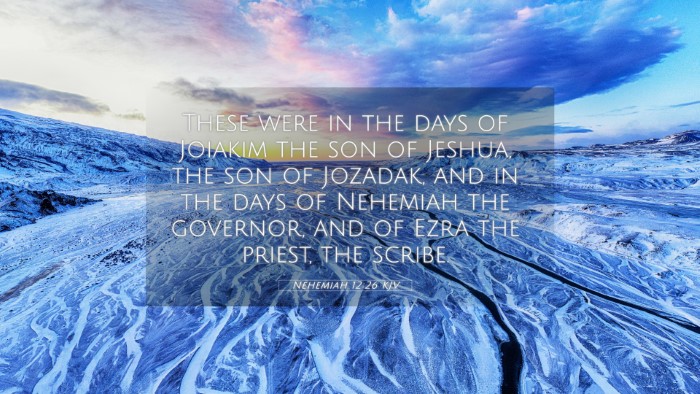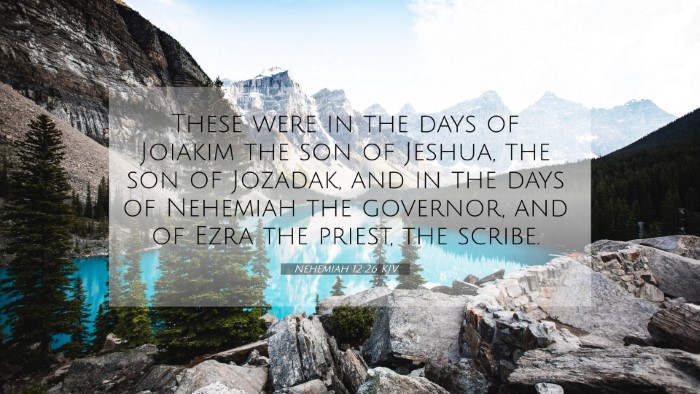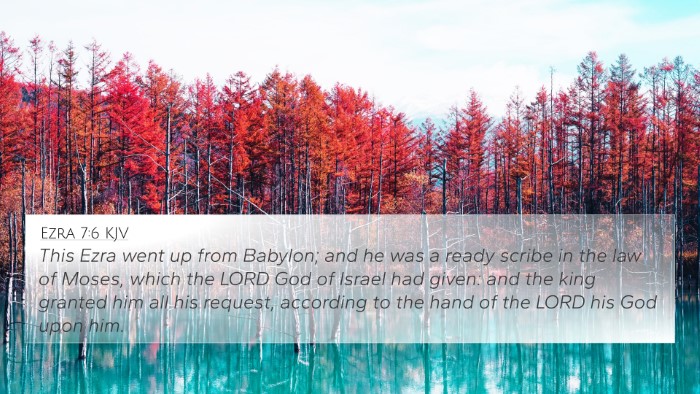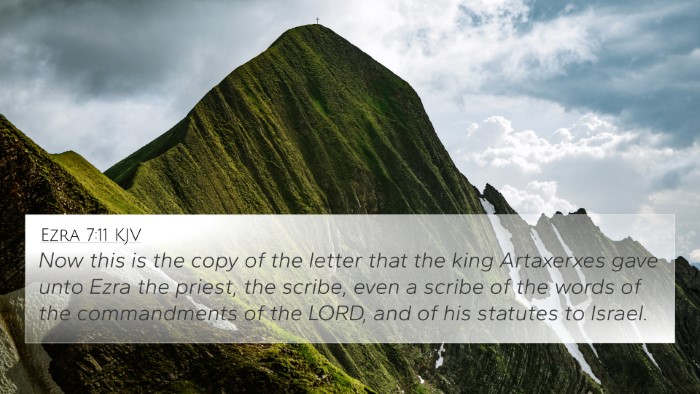Understanding Nehemiah 12:26
Nehemiah 12:26 reads as follows: “These were in the days of Joiakim the son of Jeshua, the son of Jozadak, and in the days of Nehemiah the governor, and of Ezra the priest, the scribe.” This verse encapsulates a significant time in Jewish history, particularly during the restoration and revitalization of Jerusalem after the Babylonian exile.
Historical Context
This verse gives an essential context, indicating that Joiakim was a notable figure in the post-exilic community. The reference to Nehemiah as the governor and Ezra as the priest emphasizes the collaborative effort in rebuilding both walls and spiritual life in Jerusalem.
Thematic Connections
Several themes can be drawn from Nehemiah 12:26:
- Leadership and Governance: Nehemiah's role as governor highlights the importance of strong leadership in times of restoration.
- Spiritual Renewal: Ezra's priestly role emphasizes the need for spiritual revival alongside physical reconstruction.
- Covenant Community: This verse represents the unity of leaders in Jerusalem working toward a common goal, crucial for the community's identity.
Bible Verse Cross-References
Understanding Nehemiah 12:26 is enriched through connections with other scripture references:
- Ezra 3:2: Highlights the leadership of Jeshua during the initial stages of rebuilding the temple.
- Nehemiah 8:1-8: Chronicles Ezra reading the Law to the people, which showcases the importance of scripture in community gatherings.
- Haggai 2:4: A call to be strong during the rebuilding efforts, reinforcing the themes of resilience and divine presence.
- Malachi 1:8: Addressing the needs for proper worship and leadership, emphasizing the importance of reverence toward God.
- Zechariah 3:1-10: Discusses the restoration of Joshua the high priest, which parallels Ezra's role in Nehemiah's time.
- Matthew 5:14: The city set on a hill metaphorically represents Jerusalem's intended spiritual prominence.
- Acts 15:1-35: The early church's governance relates to how spiritual leaders guide their respective communities.
- Romans 15:4: Affirms the importance of learning from the past scriptures for encouragement and endurance, reflecting on the historical lessons from Nehemiah and Ezra.
- Philippians 1:27: Encourages standing firm in one spirit, paralleling the unity seen in Nehemiah's efforts.
- Hebrews 10:24-25: Advocates for community gathering and encouragement in good works, strongly resonating with the objectives of Nehemiah's leadership.
Interpretation Insights from Commentaries
Insights from public domain commentaries present valuable interpretations of this verse:
- Matthew Henry: Henry indicates that the leaders' collaboration reflects a united spirit in worship and governance, essential for societal restoration.
- Albert Barnes: Barnes points out the transition of leadership and its significance in maintaining the Jewish heritage and identity post-exile.
- Adam Clarke: Clarke emphasizes the roles of Nehemiah and Ezra as models of spiritual integrity and community dedication who inspire followership through their commitment.
Comparative Bible Verse Analysis
By examining Nehemiah 12:26 alongside other verses, we can see how themes of unity and leadership resonate throughout the Bible:
- 1 Corinthians 3:9: Discusses being co-workers in God's service, similar to the cooperative spirit in Nehemiah’s time.
- James 5:16: The importance of prayer and confession among believers mirrors the communal aspects highlighted in Nehemiah.
- Romans 12:4-5: Speaks about the body of Christ, emphasizing unity among diverse members, which aligns with the community described in Nehemiah.
Tools for Bible Cross-Referencing
Using tools for Bible cross-referencing can deepen one’s understanding of Nehemiah 12:26:
- Bible Concordance: Helps locate key terms and their reference across books.
- Bible Cross-Reference Guide: A comparative tool that links verses by themes and subjects.
- Cross-Reference Bible Study: A method of studying scripture by analyzing interconnections.
Conclusion
Nehemiah 12:26 not only serves as a historical marker but also portrays themes of leadership, spiritual renewal, and communal unity. Its connections with various scriptures encourage a deeper exploration of communal and individual roles in spiritual renewal. By understanding the dynamics of these relationships through cross-references, believers can appreciate the continuity and dialogue within Biblical texts. This understanding underlines how crucial the combined efforts of leaders like Nehemiah and Ezra are for the restoration of faith and community in a post-exilic context.





